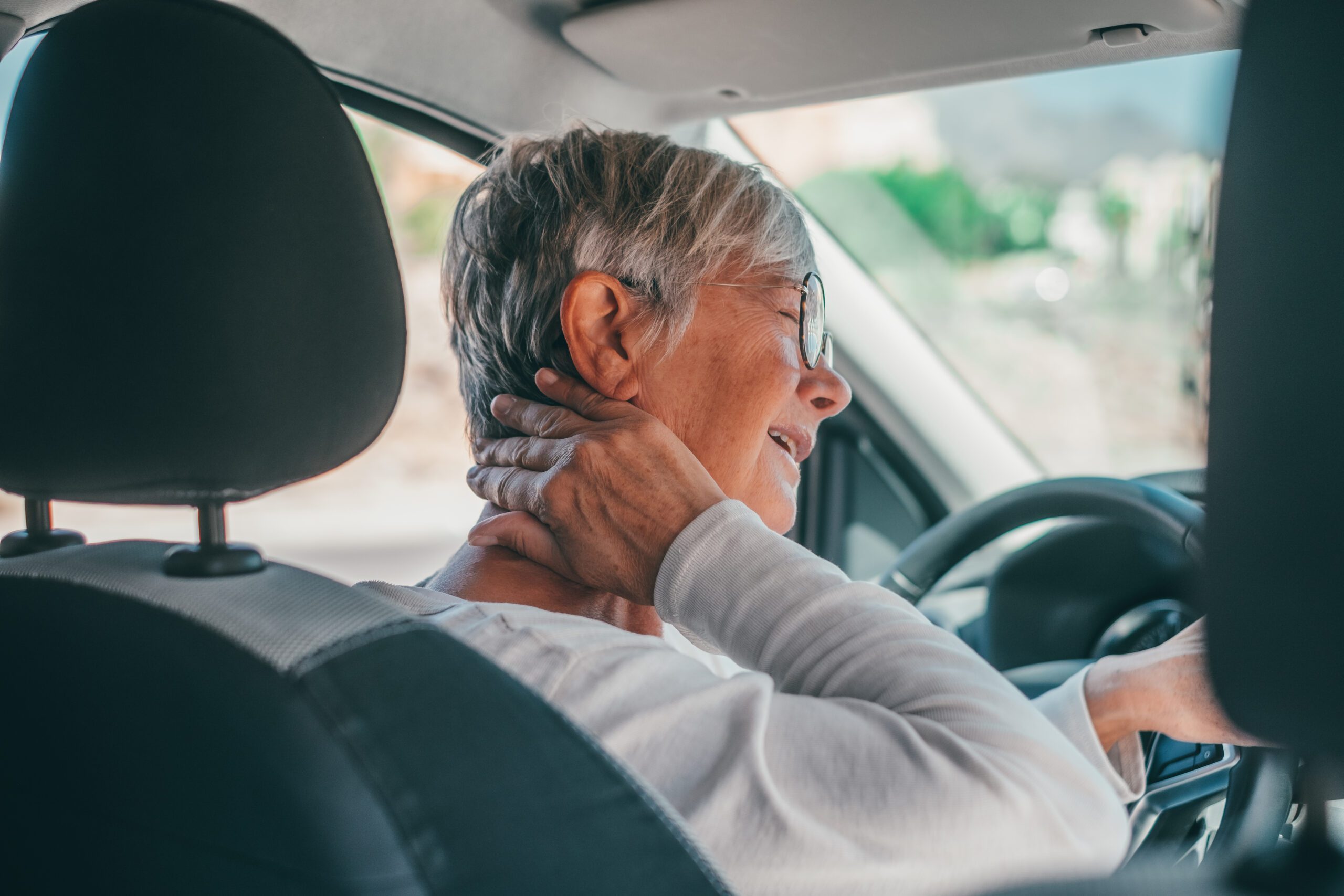Auto Injuries: Risk Factors For Whiplash and Weakened Ligaments
Find out how auto injuries can cause whiplash and contribute to weakened ligaments, affecting long-term health.
Chronic Neck Pain and Whiplash Injuries from Motor Vehicle Accidents: A Comprehensive Guide
Introduction
Imagine cruising down the road, singing along to your favorite tune, when bam!—a car rear-ends you. Suddenly, your neck feels like it’s been through a rollercoaster ride without a seatbelt. This scenario is all too common, and the resulting whiplash can lead to chronic neck pain that lingers like an unwanted guest. Motor vehicle accidents (MVAs) are a leading cause of whiplash, and understanding why these injuries happen—and how they can turn into long-term pain—is crucial for anyone who’s been in a crash.
In this guide, we’ll break down the clinical reasons behind chronic neck pain and whiplash, explore how these injuries affect your life, and spotlight the expertise of Dr. Alexander Jimenez, DC, APRN, FNP-BC, a top chiropractor in El Paso who helps accident victims recover and navigate personal injury cases. With a touch of humor to keep things light, we’ll dive into the science, treatments, and legal aspects of these injuries, ensuring you leave with a clear picture. Let’s get started!
What is Whiplash?
Whiplash is like your neck’s version of a bad day at the amusement park. It happens when your head is suddenly jerked backward and forward, stretching or tearing the muscles, ligaments, and other soft tissues in your neck. This rapid motion mimics the crack of a whip—hence the name (Mayo Clinic, n.d.).
The most common culprit? Motor vehicle accidents, especially rear-end collisions. When a car hits you from behind, your head can snap back and forth with surprising force, even at low speeds. But whiplash isn’t exclusive to car crashes—it can also occur from sports injuries, falls, or even a particularly wild ride on a rollercoaster (Cleveland Clinic, 2022).
Symptoms of Whiplash:
- Neck pain and stiffness
- Headaches, often at the base of the skull
- Dizziness or vertigo
- Shoulder or arm pain
- Fatigue and trouble concentrating
While many people recover within weeks, research suggests that up to 50% may experience lingering symptoms, turning a temporary annoyance into a chronic issue (Wikipedia, n.d.).
References:
- Cleveland Clinic. (2022). Whiplash (Neck Strain): What It Is, Symptoms & Treatment. Retrieved from https://my.clevelandclinic.org/health/diseases/11982-whiplash
- Mayo Clinic. (n.d.). Whiplash – Symptoms and causes. Retrieved from https://www.mayoclinic.org/diseases-conditions/whiplash/symptoms-causes/syc-20378921
- Wikipedia. (n.d.). Whiplash (medicine). Retrieved from https://en.wikipedia.org/wiki/Whiplash_(medicine)
Clinical Rationale for Chronic Neck Pain Following Whiplash
So, why does a quick jolt to the neck sometimes lead to pain that just won’t quit? It’s all about the biomechanics of the injury. During a whiplash event, the sudden acceleration-deceleration force puts tremendous stress on your cervical spine (the neck part of your backbone). This can cause micro-tears or stretching in the ligaments and muscles, which are like the scaffolding holding your neck together (El Paso Chiropractor Blog, 2016).
When these ligaments—especially the capsular ligaments around the facet joints—get damaged, they can become lax, leading to cervical instability. Think of your neck as a stack of blocks; if the strings tying them together loosen, the blocks wobble, causing pain, inflammation, and sometimes nerve irritation. This instability can also trigger a cascade of problems, like muscle spasms, headaches, and even degenerative changes over time, such as osteoarthritis (ScienceDirect, n.d.).
Key Statistics:
- Prevalence: 30%-50% of the general population experiences neck pain, with one-third developing chronic pain lasting over 6 months, and 5% facing significant disability (PMC, n.d.).
- Chronic Pain Risk: Follow-up studies suggest that people with a history of neck injury from MVAs have a higher risk of chronic neck pain (PMC, n.d.).
- Ligament Strain: Research shows that ligaments absorb up to 10 times more force than discs during whiplash, with head rotation increasing strain by 34%-196% at 60° (PMC, n.d.).
| Condition | Prevalence (%) |
|---|---|
| General Population Neck Pain | 30-50 |
| Chronic Neck Pain (>6 months) | 33 |
| Significant Disability | 5 |
References:
- El Paso Chiropractor Blog. (2016). Whiplash Associated Disorders & Ligament. Retrieved from https://www.elpasochiropractorblog.com/2016/08/whiplash-associated-disorders-ligament.html
- PMC. (n.d.). Impact of motor vehicle accidents on neck pain and disability in general practice. Retrieved from https://pmc.ncbi.nlm.nih.gov/articles/PMC2529200/
- ScienceDirect. (n.d.). Whiplash Injury – an overview. Retrieved from https://www.sciencedirect.com/topics/pharmacology-toxicology-and-pharmaceutical-science/whiplash-injury
Whiplash-Associated Disorders (WAD)
Whiplash doesn’t just stop at neck pain—it can bring a whole entourage of symptoms known as Whiplash-Associated Disorders (WAD). WAD is a clinical term that covers the range of issues stemming from whiplash injuries, graded from 0 to 4 based on severity (Physiopedia, n.d.):
- Grade 0: No symptoms or physical signs.
- Grade 1: Neck pain, stiffness, or tenderness, but no physical signs.
- Grade 2: Neck pain with musculoskeletal signs, like reduced range of motion.
- Grade 3: Neck pain with neurological signs, such as numbness or weakness.
- Grade 4: Neck pain with fracture or dislocation.
WAD symptoms can include headaches, dizziness, tinnitus (ringing in the ears), and even cognitive issues like trouble focusing. For some, these symptoms fade quickly, but for others, they can become chronic, impacting work, sleep, and daily activities. Research indicates that negative thoughts and pain behaviors can worsen chronic WAD, highlighting the need for both physical and psychological support (Physiopedia, n.d.).
References:
- Physiopedia. (n.d.). Whiplash Associated Disorders. Retrieved from https://www.physio-pedia.com/Whiplash_Associated_Disorders
The Role of Ligaments in Whiplash Injuries
Ligaments are the unsung heroes of your body, quietly holding your bones together like loyal sidekicks. In whiplash, these ligaments—particularly the capsular ligaments of the cervical spine—take a beating. The sudden force can stretch or tear them, reducing their ability to stabilize the neck’s joints (El Paso Chiropractor Blog, 2016).
A study from Yale University tested this idea by simulating rear-end collisions on cadaver spines. They found that whiplash-exposed ligaments were significantly weaker than those in control specimens, supporting the idea that ligament damage is a key player in whiplash injuries. Weakened ligaments can lead to:
- Altered Joint Motion: Excessive movement between vertebrae.
- Compression and Inflammation: Irritation of surrounding tissues.
- Pain and Degeneration: Long-term issues like osteoarthritis.
This damage sets the stage for chronic pain, as the neck struggles to maintain proper alignment and function (El Paso Chiropractor Blog, 2016).
References:
- El Paso Chiropractor Blog. (2016). Whiplash Associated Disorders & Ligament. Retrieved from https://www.elpasochiropractorblog.com/2016/08/whiplash-associated-disorders-ligament.html
Diagnosis and Evaluation
Diagnosing whiplash is a bit like solving a puzzle—it requires piecing together the patient’s story, physical exam findings, and sometimes imaging studies. Doctors start with a detailed history of the accident, asking about the mechanism of injury (e.g., rear-end collision) and symptoms like pain, stiffness, or numbness. Physical exams check for tenderness, muscle spasms, and range of motion, while neurological tests look for signs of nerve damage, like tingling in the arms (Johns Hopkins Medicine, n.d.).
Imaging plays a big role, too. X-rays can rule out fractures, while MRIs or CT scans might reveal soft tissue damage or disc issues. However, since whiplash often affects ligaments and muscles, standard imaging may miss subtle injuries. That’s where chiropractic evaluations shine, using techniques like:
- Motion Palpation: Feeling how joints move.
- Static Palpation: Checking for tenderness or misalignment.
- Posture and Gait Analysis: Assessing overall body mechanics.
In El Paso, Dr. Alexander Jimenez takes diagnosis to the next level with advanced imaging like functional MRI (fMRI) and digital motion X-ray (DMX), which capture the spine in motion to reveal instability that static images might miss (Dr. Alex Jimenez, n.d.).
References:
- Dr. Alex Jimenez. (n.d.). Personal Injury Doctor. Retrieved from https://dralexjimenez.com/personal-injury-doctor/
- Johns Hopkins Medicine. (n.d.). Whiplash Injury. Retrieved from https://www.hopkinsmedicine.org/health/conditions-and-diseases/whiplash-injury
Personal Injury Rehabilitation- Video
Treatment Options
Treating whiplash is like fixing a car after a crash—you need the right tools and a good mechanic. Conventional treatments include pain medications, physical therapy, and, in rare cases, surgery. However, chiropractic care is often a go-to option for many, offering a non-invasive way to address both symptoms and underlying issues.
Chiropractic treatment for whiplash typically involves:
- Spinal Adjustments: Realigning the spine to restore motion.
- Soft Tissue Therapy: Techniques like muscle energy therapy to ease tension.
- Modalities: Ultrasound or electrical stimulation to reduce inflammation.
- Home Exercises: Stretches and strengthening moves to support recovery.
Dr. Jimenez’s clinic in El Paso emphasizes personalized plans, combining these techniques with patient education to promote long-term healing. Research supports this approach, with studies showing that exercise programs and multidisciplinary therapy are effective for chronic WAD (Physiopedia, n.d.).
Recovery times vary—some people bounce back in weeks, while others need months or more, especially if pain becomes chronic. Patience and consistency are key, and Dr. Jimenez’s team works closely with other healthcare providers to ensure comprehensive care (ChiroMed, n.d.).
References:
- ChiroMed. (n.d.). ChiroMed Services. Retrieved from https://chiromed.com/
- Dr. Alex Jimenez. (n.d.). Personal Injury Doctor. Retrieved from https://dralexjimenez.com/personal-injury-doctor/
- Physiopedia. (n.d.). Whiplash Associated Disorders. Retrieved from https://www.physio-pedia.com/Whiplash_Associated_Disorders
Personal Injury Cases in El Paso
In El Paso, personal injury cases from MVAs are a big deal, and chiropractors like Dr. Alexander Jimenez play a starring role. Beyond treating pain, Dr. Jimenez acts as a bridge between medical care and legal documentation, helping patients navigate the complex world of insurance claims and lawsuits. His expertise ensures that injuries are thoroughly documented, which is critical for securing fair compensation (ChiroMed, n.d.).
Dr. Jimenez’s approach includes:
- Detailed Evaluations: Using multipage questionnaires to capture the accident’s impact.
- Advanced Diagnostics: Ordering X-rays or MRIs to support treatment and legal claims.
- Treatment Plans: Tailored to both heal the patient and provide evidence for court.
His work is especially valuable in El Paso, where MVAs are common, and victims need advocates who understand both medicine and the law. By collaborating with attorneys and other healthcare providers, Dr. Jimenez helps patients focus on recovery while their cases move forward (Dr. Alex Jimenez, n.d.).
References:
- ChiroMed. (n.d.). ChiroMed Services. Retrieved from https://chiromed.com/
- Dr. Alex Jimenez. (n.d.). Personal Injury Doctor. Retrieved from https://dralexjimenez.com/personal-injury-doctor/
Advanced Imaging and Diagnostic Evaluations
When it comes to personal injury cases, accuracy is everything. Dr. Jimenez uses cutting-edge imaging to get a clear picture of whiplash injuries. Tools like functional MRI (fMRI) and digital motion X-ray (DMX) show how the spine moves, revealing instability or damage that standard X-rays might miss. These dynamic images are like a video of your neck in action, helping pinpoint the root of the pain (Dr. Alex Jimenez, n.d.).
Dual-scope procedures—combining different imaging techniques or perspectives—offer an even deeper look, ensuring no detail is overlooked. This precision is crucial not only for treatment but also for legal cases, where detailed medical reports can make or break a claim. Dr. Jimenez’s ability to translate these findings into clear documentation sets him apart, making him a trusted ally for MVA victims in El Paso (Dr. Alex Jimenez, n.d.).
References:
- Dr. Alex Jimenez. (n.d.). Personal Injury Doctor. Retrieved from https://dralexjimenez.com/personal-injury-doctor/
Conclusion
Chronic neck pain and whiplash from motor vehicle accidents are more than just a pain in the neck—they can disrupt your life, work, and well-being. Understanding the clinical reasons behind these injuries, from ligament damage to cervical instability, is the first step toward recovery. In El Paso, Dr. Alexander Jimenez offers hope with his expertise in chiropractic care, advanced diagnostics, and personal injury support, helping patients heal and fight for justice.
If you’ve been in an accident, don’t brush off neck pain as “just a sprain.” Seek professional care to address the injury and prevent long-term issues. Dr. Jimenez’s comprehensive approach, combining science, compassion, and legal savvy, makes him a standout choice for anyone navigating the aftermath of an MVA.
Disclaimer: This blog post is for informational purposes only and should not be taken as medical advice. Always consult with a healthcare professional for diagnosis and treatment of any medical condition.
References:
- Cleveland Clinic. (2022). Whiplash (Neck Strain): What It Is, Symptoms & Treatment. Retrieved from https://my.clevelandclinic.org/health/diseases/11982-whiplash
- ChiroMed. (n.d.). ChiroMed Services. Retrieved from https://chiromed.com/
- Dr. Alex Jimenez. (n.d.). Personal Injury Doctor. Retrieved from https://dralexjimenez.com/personal-injury-doctor/
- El Paso Chiropractor Blog. (2016). Whiplash Associated Disorders & Ligament. Retrieved from https://www.elpasochiropractorblog.com/2016/08/whiplash-associated-disorders-ligament.html
- Johns Hopkins Medicine. (n.d.). Whiplash Injury. Retrieved from https://www.hopkinsmedicine.org/health/conditions-and-diseases/whiplash-injury
- Mayo Clinic. (n.d.). Whiplash – Symptoms and causes. Retrieved from https://www.mayoclinic.org/diseases-conditions/whiplash/symptoms-causes/syc-20378921
- Physiopedia. (n.d.). Whiplash Associated Disorders. Retrieved from https://www.physio-pedia.com/Whiplash_Associated_Disorders
- PMC. (n.d.). Impact of motor vehicle accidents on neck pain and disability in general practice. Retrieved from https://pmc.ncbi.nlm.nih.gov/articles/PMC2529200/
- ScienceDirect. (n.d.). Whiplash Injury – an overview. Retrieved from https://www.sciencedirect.com/topics/pharmacology-toxicology-and-pharmaceutical-science/whiplash-injury
- Wikipedia. (n.d.). Whiplash (medicine). Retrieved from https://en.wikipedia.org/wiki/Whiplash_(medicine)






